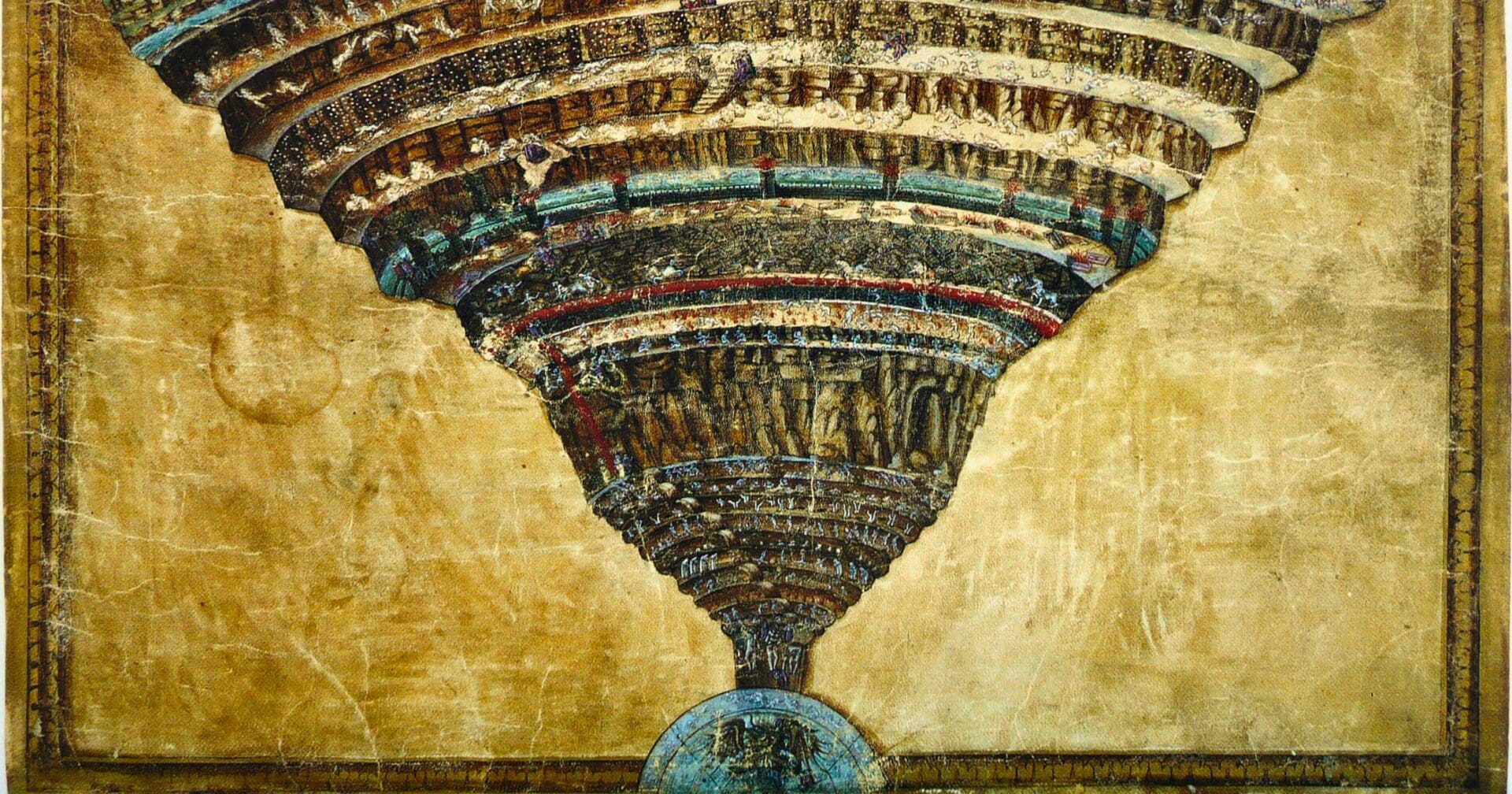Dante Alighieri’s Divine Comedy, celebrated for its vivid imagery and profound theological themes, was profoundly influenced by a 12th-century Catholic monk: Joachim of Fiore. This Cistercian abbot and mystic shaped medieval eschatology and left a little-known mark on Dante’s masterpiece.
Joachim’s concept of history divided time into three ages corresponding to the Holy Trinity: the Age of the Father (Old Testament), the Age of the Son (New Testament and the Church), and the forthcoming Age of the Holy Spirit—a future era of spiritual renewal and ultimate unity. This vision resonated with Dante, who reflected it in his portrayal of salvation history and human destiny. Both men saw history as the unfolding of God’s divine plan, moving toward redemption and grace.
Central to Joachim’s thought were his intricate symbolic diagrams in his manuscript the Liber Figurarum. These illustrations, such as interlocking circles representing the Trinity, likely inspired Dante’s stunning geometric imagery in Paradiso, where he describes three radiant rings of light symbolizing divine unity and majesty. Joachim’s visionary use of symbols offered a framework that Dante transformed into poetic brilliance.
Joachim’s spiritual optimism aligned with Dante’s critique of ecclesiastical corruption and his hope for a purified Church. Dante’s depiction of Beatrice as a guiding force of grace mirrors Joachim’s vision of a renewed faith in the Age of the Holy Spirit. Joachim’s apocalyptic themes and belief in spiritual progress also added to Dante’s work a sense of divine justice and ultimate redemption. Dante even honored Joachim directly, placing him in the “Heaven of Theologians” in Paradiso.
Though Joachim was never formally canonized, in 2024, Pope Francis said Joachim “was able to propose the ideal of a new spirit of coexistence among people, based on universal fraternity and Christian peace, the fruit of a life lived in the spirit of the Gospel.”
Did you know that Dante also believed no words rhymed with Christ? Here’s why…
Photo credit: Public Domain via Wikimedia Commons


















